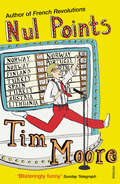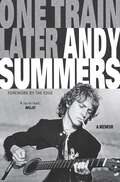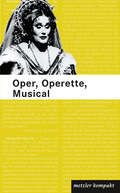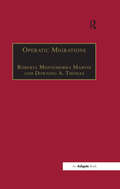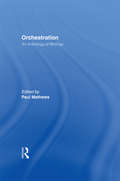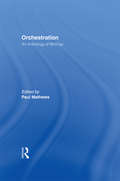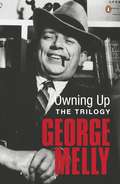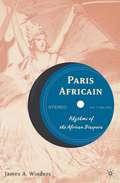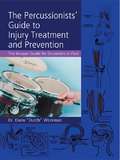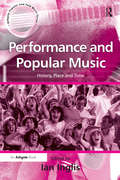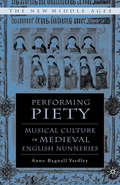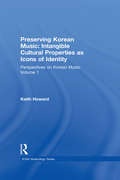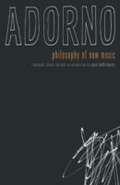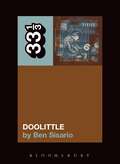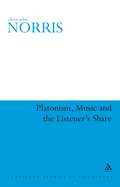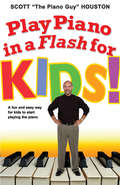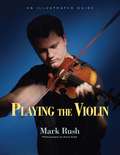- Table View
- List View
Nul Points
by Tim MooreThe spangled insanity, the stubborn reinforcement of crude national stereotypes, the scoreboard shamelessly corrupted by cross-border friendship and hatred... throughout those long post-ABBA decades, the Eurovision Song Contest has been drawing 450 million of us to the sofa for all the wrong reasons. And the most gloriously wrong of all: our enduring fascination with the unfortunates left to wander the desolate summit of Mount Fiasco without a point to their names.From Lisbon to Liverpool, from the Black Sea to the Baltic, Tim Moore travels the continent to track down the thirteen Eurominstrels who suffered the entertainment world's prime humiliation.
One Train Later: A memoir
by Andy SummersFrom his first guitar at age 13 and his early days on the Bournemouth music scene, to his relationships and encounters in London and the US with Zoot Money's Big Roll Band, Jimi Hendrix, Eric Clapton, John Belushi and Eric Burdon, among others, Andy Summers proves himself a master of telling detail and dramatic anecdote. But, of course, the early work is only part of the story, and Andy's account of his role as guitarist for The Police - a gig he almost didn't get, despite the wishes of bassist/singer Sting, until a chance encounter with drummer Stewart Copeland on a London train - is the first full inside story of the band ever published. The heights of fame that The Police achieved have rarely been duplicated, and they were rivaled only by the personal chaos that such success brought about, an insight never lost on Summers in the telling. With never-before-published photos from Summers' personal collection, One Train Later is a constantly surprising and poignant memoir, and the work of a first-class writer.
Oper, Operette, Musical: 600 Werkbeschreibungen
by Harald HasslerVon Aida bis Zauberflöte, von Monteverdi bis Mamma Mia - die Eckdaten zu 450 Opern, 150 Operetten und Musicals sind kurz und bündig zusammengestellt: Komponist, Librettist, Aufführungsdaten, Inhalt und Wirkung. Bestens informiert kann der Musikfreund jedes Opernevent noch mehr genießen.
Operatic Migrations: Transforming Works and Crossing Boundaries
by DowningA. ThomasThis volume takes an interdisciplinary approach to studying a wide range of subjects associated with the creation, performance and reception of 'opera' in varying social and historical contexts from the eighteenth to the twentieth centuries. Each essay addresses migrations between genres, cultures, literary and musical works, modes of expression, media of presentation and aesthetics. Although the directions the contributions take are diverse, they converge in significant ways, particularly with the rebuttal of the notion of the singular nature of the operatic work. The volume strongly asserts that works are meaningfully transformed by the manifold circumstances of their creation and reception, and that these circumstances have an impact on the life of those works in their many transformations and on a given audience's experience of them. Topics covered include transformations of literary sources and their migration into the operatic genre; works that move across geographical and social boundaries into different cultural contexts; movements between media and/or genre as well as alterations through interpretation and performance of the composer's creation; the translation of spoken theatre to lyric theatre; the theoretical issues contingent on the rendering of 'speech' into 'song'; and the transforming effects of aesthetic considerations as they bear on opera. Crossing over disciplinary boundaries between music, literary studies, history, cultural studies and art history, the volume enriches our knowledge and understanding of the operatic experience and the works. The book will therefore appeal to those working in the field of music, literary and cultural studies, and to those with a particular interest in opera and musical theatre.
Operatic Migrations: Transforming Works and Crossing Boundaries
by Roberta Montemorra Marvin Downing A. ThomasThis volume takes an interdisciplinary approach to studying a wide range of subjects associated with the creation, performance and reception of 'opera' in varying social and historical contexts from the eighteenth to the twentieth centuries. Each essay addresses migrations between genres, cultures, literary and musical works, modes of expression, media of presentation and aesthetics. Although the directions the contributions take are diverse, they converge in significant ways, particularly with the rebuttal of the notion of the singular nature of the operatic work. The volume strongly asserts that works are meaningfully transformed by the manifold circumstances of their creation and reception, and that these circumstances have an impact on the life of those works in their many transformations and on a given audience's experience of them. Topics covered include transformations of literary sources and their migration into the operatic genre; works that move across geographical and social boundaries into different cultural contexts; movements between media and/or genre as well as alterations through interpretation and performance of the composer's creation; the translation of spoken theatre to lyric theatre; the theoretical issues contingent on the rendering of 'speech' into 'song'; and the transforming effects of aesthetic considerations as they bear on opera. Crossing over disciplinary boundaries between music, literary studies, history, cultural studies and art history, the volume enriches our knowledge and understanding of the operatic experience and the works. The book will therefore appeal to those working in the field of music, literary and cultural studies, and to those with a particular interest in opera and musical theatre.
Orchestration: An Anthology Of Writings (PDF)
by Paul MathewsOrchestration: An Anthology of Writings is designed to be a primary or ancillary text for college-level music majors. Although there are several 'how to' textbooks aimed at this market, there is little available that traces the history of orchestration through the writings of composers themselves. By collecting writings from the ninenteenth century to today, Mathews illuminates how orchestration has grown and developed, as well as presenting a wide variety of theories that have been embraced by the leading practitioners in the field. The collection then traces the history of orchestration, beginning with Beethoven's Orchestra (with writings by Berlioz, Wagner, Gounod, Mahler, and others), the 19th century (Mahler, Gevaert, Strauss) the fin de siecle (on the edge of musical modernism; writings by Berlioz, Jadassohn, Delius, and Rimsky Korsakov), early modern (Busoni, Schoenberg, Stravinsky, Grainger, and others), and high modern (Carter, Feldman, Reich, Brant). Many of these pieces have never been translated into English before; some only appeared in small journals or the popular press and have never appeared in a book; and none have ever been collected in one place. The study of orchestration is a key part of all students of music theory and composition. Orchestration provides a much needed resource for these students, filling a gap in the literature
Orchestration: An Anthology Of Writings
by Paul MathewsOrchestration: An Anthology of Writings is designed to be a primary or ancillary text for college-level music majors. Although there are several 'how to' textbooks aimed at this market, there is little available that traces the history of orchestration through the writings of composers themselves. By collecting writings from the ninenteenth century to today, Mathews illuminates how orchestration has grown and developed, as well as presenting a wide variety of theories that have been embraced by the leading practitioners in the field. The collection then traces the history of orchestration, beginning with Beethoven's Orchestra (with writings by Berlioz, Wagner, Gounod, Mahler, and others), the 19th century (Mahler, Gevaert, Strauss) the fin de siecle (on the edge of musical modernism; writings by Berlioz, Jadassohn, Delius, and Rimsky Korsakov), early modern (Busoni, Schoenberg, Stravinsky, Grainger, and others), and high modern (Carter, Feldman, Reich, Brant). Many of these pieces have never been translated into English before; some only appeared in small journals or the popular press and have never appeared in a book; and none have ever been collected in one place. The study of orchestration is a key part of all students of music theory and composition. Orchestration provides a much needed resource for these students, filling a gap in the literature
Orchestration: An Anthology of Writings
by Paul MathewsOrchestration: An Anthology of Writings is designed to be a primary or ancillary text for college-level music majors. Although there are several 'how to' textbooks aimed at this market, there is little available that traces the history of orchestration through the writings of composers themselves. By collecting writings from the ninenteenth century to today, Mathews illuminates how orchestration has grown and developed, as well as presenting a wide variety of theories that have been embraced by the leading practitioners in the field. The collection then traces the history of orchestration, beginning with Beethoven's Orchestra (with writings by Berlioz, Wagner, Gounod, Mahler, and others), the 19th century (Mahler, Gevaert, Strauss) the fin de siecle (on the edge of musical modernism; writings by Berlioz, Jadassohn, Delius, and Rimsky Korsakov), early modern (Busoni, Schoenberg, Stravinsky, Grainger, and others), and high modern (Carter, Feldman, Reich, Brant). Many of these pieces have never been translated into English before; some only appeared in small journals or the popular press and have never appeared in a book; and none have ever been collected in one place. The study of orchestration is a key part of all students of music theory and composition. Orchestration provides a much needed resource for these students, filling a gap in the literature.
Orchestration: An Anthology of Writings
by Paul MathewsOrchestration: An Anthology of Writings is designed to be a primary or ancillary text for college-level music majors. Although there are several 'how to' textbooks aimed at this market, there is little available that traces the history of orchestration through the writings of composers themselves. By collecting writings from the ninenteenth century to today, Mathews illuminates how orchestration has grown and developed, as well as presenting a wide variety of theories that have been embraced by the leading practitioners in the field. The collection then traces the history of orchestration, beginning with Beethoven's Orchestra (with writings by Berlioz, Wagner, Gounod, Mahler, and others), the 19th century (Mahler, Gevaert, Strauss) the fin de siecle (on the edge of musical modernism; writings by Berlioz, Jadassohn, Delius, and Rimsky Korsakov), early modern (Busoni, Schoenberg, Stravinsky, Grainger, and others), and high modern (Carter, Feldman, Reich, Brant). Many of these pieces have never been translated into English before; some only appeared in small journals or the popular press and have never appeared in a book; and none have ever been collected in one place. The study of orchestration is a key part of all students of music theory and composition. Orchestration provides a much needed resource for these students, filling a gap in the literature.
Owning Up: The Trilogy
by George MellyThis single volume includes three famous memoirs - Scouse Mouse, Rum, Bum & Concertina and Owning Up, with a new introduction by the author. Scouse Mouse is a funny and frequently touching story of the author's 1930s childhood in a middle-class Liverpudlian household. Rum, Bum & Concertina, the naval equivalent of wine, women and song, describes Melly's National Service as one of the most unlikely naval ratings ever. He becomes an anarchist and connoisseur of Surrealist Art while self-educating himself on some of the wilder shores of love. Once demobbed, Melly comes to London to work in an art gallery, and in Owning Up he describes how he slipped into the world of the jazz revival, revelling in an endless round of pubs, clubs, seedy guest-houses and transport caffs while surrounded by a mad array of musicians, tarts, drunks and arch-eccentrics.
Paris Africain: Rhythms of the African Diaspora
by J. WindersThe growth of African immigration to France at the end of the Twentieth Century wrought cultural change in this epicentre of the avant-garde in European art and music. James Winders presents the story of African immigrants to France as a unique chapter in the long history of the reception accorded expatriate artists in Paris.
The Percussionists' Guide to Injury Treatment and Prevention: The Answer Guide to Drummers in Pain
by Dr. Darin WorkmanPain and injury are near constant companions for professional musicians. Aching hands, painful joint swelling, back problems, among other ailments were all thought to be part of the price musicians had to pay to be performers. However, thanks to an increasing awareness of both the kinesiology and biology of movement, as well as proper techniques for fostering good performance habits, musicians no longer have to suffer in silence.Perhaps no group of musicians has been more prone to career-threatening injury than percussionists, and the demands for speed, power, control, and endurance are only increasing. Often musicians wait until an injury is so aggravated that it's too late to be fully treated. In almost every case, if the drummer had done some very simple preventative (or early) care, the injury would never have become a serious issue.The Percussionists' Guide to Injury Treatment and Prevention is designed to aid in that early prevention and treatment. Although it is not a substitute for clinical diagnosis or medical care from a trained physician, it can educate the musician as to how the human body works; the role of muscles and skeletal structure in supporting movement; and understanding specifically how to prevent and treat common injuries. The book begins with a general discussion of how the body works and basic prevention concepts. It then covers each specific area of the body (where it hurts), suggesting practical ways to prevent and treat it. Basic anatomy is covered in terms that a musician can understand.For all percussion students and professionals, The Percussionists' Guide to Injury Treatment and Prevention will be an indispensable companion.
The Percussionists' Guide to Injury Treatment and Prevention: The Answer Guide to Drummers in Pain
by Dr. Darin WorkmanPain and injury are near constant companions for professional musicians. Aching hands, painful joint swelling, back problems, among other ailments were all thought to be part of the price musicians had to pay to be performers. However, thanks to an increasing awareness of both the kinesiology and biology of movement, as well as proper techniques for fostering good performance habits, musicians no longer have to suffer in silence.Perhaps no group of musicians has been more prone to career-threatening injury than percussionists, and the demands for speed, power, control, and endurance are only increasing. Often musicians wait until an injury is so aggravated that it's too late to be fully treated. In almost every case, if the drummer had done some very simple preventative (or early) care, the injury would never have become a serious issue.The Percussionists' Guide to Injury Treatment and Prevention is designed to aid in that early prevention and treatment. Although it is not a substitute for clinical diagnosis or medical care from a trained physician, it can educate the musician as to how the human body works; the role of muscles and skeletal structure in supporting movement; and understanding specifically how to prevent and treat common injuries. The book begins with a general discussion of how the body works and basic prevention concepts. It then covers each specific area of the body (where it hurts), suggesting practical ways to prevent and treat it. Basic anatomy is covered in terms that a musician can understand.For all percussion students and professionals, The Percussionists' Guide to Injury Treatment and Prevention will be an indispensable companion.
The Performance and Popular Music: History, Place and Time (PDF)
by Derek Scott Ian InglisSince the emergence of rock'n'roll in the early 1950s, there have been a number of live musical performances that were not only memorable in themselves, but became hugely influential in the way they shaped the subsequent trajectory and development of popular music. Each, in its own way, introduced new styles, confronted existing practices, shifted accepted definitions, and provided templates for others to follow. Performance and Popular Music explores these processes by focusing on some of the specific occasions when such transformations occurred An international array of scholars reveal that it is through the (often disruptive) dynamics of performance âe" and the interaction between performer and audience âe" that patterns of musical change and innovation can best be recognised. Through multi-disciplinary analyses which consider the history, place and time of each event, the performances are located within their social and professional contexts, and their immediate and long-term musical consequences considered. From the Beatles and Bob Dylan to Michael Jackson and Madonna, from Woodstock and Monterey to Altamont and Live Aid, this book provides an indispensable assessment of the importance of live performance in the practice of popular music, and an essential guide to some of the key moments in its history. Alternate ISBN 9780754640561
Performance and Popular Music: History, Place and Time
by Ian InglisSince the emergence of rock'n'roll in the early 1950s, there have been a number of live musical performances that were not only memorable in themselves, but became hugely influential in the way they shaped the subsequent trajectory and development of popular music. Each, in its own way, introduced new styles, confronted existing practices, shifted accepted definitions, and provided templates for others to follow. Performance and Popular Music explores these processes by focusing on some of the specific occasions when such transformations occurred. An international array of scholars reveal that it is through the (often disruptive) dynamics of performance - and the interaction between performer and audience - that patterns of musical change and innovation can best be recognised. Through multi-disciplinary analyses which consider the history, place and time of each event, the performances are located within their social and professional contexts, and their immediate and long-term musical consequences considered. From the Beatles and Bob Dylan to Michael Jackson and Madonna, from Woodstock and Monterey to Altamont and Live Aid, this book provides an indispensable assessment of the importance of live performance in the practice of popular music, and an essential guide to some of the key moments in its history.
Performance and Popular Music: History, Place and Time
by Ian InglisSince the emergence of rock'n'roll in the early 1950s, there have been a number of live musical performances that were not only memorable in themselves, but became hugely influential in the way they shaped the subsequent trajectory and development of popular music. Each, in its own way, introduced new styles, confronted existing practices, shifted accepted definitions, and provided templates for others to follow. Performance and Popular Music explores these processes by focusing on some of the specific occasions when such transformations occurred. An international array of scholars reveal that it is through the (often disruptive) dynamics of performance - and the interaction between performer and audience - that patterns of musical change and innovation can best be recognised. Through multi-disciplinary analyses which consider the history, place and time of each event, the performances are located within their social and professional contexts, and their immediate and long-term musical consequences considered. From the Beatles and Bob Dylan to Michael Jackson and Madonna, from Woodstock and Monterey to Altamont and Live Aid, this book provides an indispensable assessment of the importance of live performance in the practice of popular music, and an essential guide to some of the key moments in its history.
Performing Piety: Musical Culture in Medieval English Nunneries (The New Middle Ages)
by A. YardleyAddressing questions about the musical life in English nunneries in the later Middle Ages, Yardley pieces together a mosaic of nunnery musical life, where even the smallest convents sang the monastic offices on a daily basis and many of the larger houses celebrated the late medieval liturgy in all of its complexity.
Perspectives on Korean Music: Volume 1: Preserving Korean Music: Intangible Cultural Properties as Icons of Identity (SOAS Studies in Music)
by Keith HowardAs Korea has developed and modernized, music has come to play a central role as a symbol of national identity. Nationalism has been stage managed by scholars, journalists and, from the beginning of the 1960s, by the state, as music genres have been documented, preserved and promoted as 'Intangible Cultural Properties'. Practitioners have been appointed 'holders' or, in everyday speech, 'Human Cultural Properties', to maintain, perform and teach exemplary versions of tradition. Over the last few years, the Korean preservation system has become a model for UNESCO's 'Living Human Treasures' and 'Masterpieces of the Oral and Intangible Heritage of Mankind'. In this volume, Keith Howard provides the first comprehensive analysis in English of the system. He documents court music and dance, Confucian and shaman ritual music, folksongs, the professional folk-art genres of p'ansori ('epic storytelling through song') and sanjo ('scattered melodies'), and more, as well as instrument making, food preparation and liquor distilling - a good performance, after all, requires wine to flow. The extensive documentation reflects considerable fieldwork, discussion and questioning carried out over a 25-year period, and blends the voices of scholars, government officials, performers, craftsmen and the general public. By interrogating both contemporary and historical data, Howard negotiates the debates and critiques that surround this remarkable attempt to protect local and national music and other performance arts and crafts. An accompanying CD illustrates many of the music genres considered, featuring many master musicians including some who have now died. The preservation of music and other performance arts and crafts is part of the contemporary zeitgeist, yet occupies contested territory. This is particularly true when the concept of 'tradition' is invoked. Within Korea, the recognition of the fragility of indigenous music inherited from earlier times is balanced by an awareness of the need to maintain identity as lifestyles change in response to modernization and globalization. Howard argues that Korea, and the world, is a better place when the richness of indigenous music is preserved and promoted.
Perspectives on Korean Music: Volume 1: Preserving Korean Music: Intangible Cultural Properties as Icons of Identity (SOAS Studies in Music)
by Keith HowardAs Korea has developed and modernized, music has come to play a central role as a symbol of national identity. Nationalism has been stage managed by scholars, journalists and, from the beginning of the 1960s, by the state, as music genres have been documented, preserved and promoted as 'Intangible Cultural Properties'. Practitioners have been appointed 'holders' or, in everyday speech, 'Human Cultural Properties', to maintain, perform and teach exemplary versions of tradition. Over the last few years, the Korean preservation system has become a model for UNESCO's 'Living Human Treasures' and 'Masterpieces of the Oral and Intangible Heritage of Mankind'. In this volume, Keith Howard provides the first comprehensive analysis in English of the system. He documents court music and dance, Confucian and shaman ritual music, folksongs, the professional folk-art genres of p'ansori ('epic storytelling through song') and sanjo ('scattered melodies'), and more, as well as instrument making, food preparation and liquor distilling - a good performance, after all, requires wine to flow. The extensive documentation reflects considerable fieldwork, discussion and questioning carried out over a 25-year period, and blends the voices of scholars, government officials, performers, craftsmen and the general public. By interrogating both contemporary and historical data, Howard negotiates the debates and critiques that surround this remarkable attempt to protect local and national music and other performance arts and crafts. An accompanying CD illustrates many of the music genres considered, featuring many master musicians including some who have now died. The preservation of music and other performance arts and crafts is part of the contemporary zeitgeist, yet occupies contested territory. This is particularly true when the concept of 'tradition' is invoked. Within Korea, the recognition of the fragility of indigenous music inherited from earlier times is balanced by an awareness of the need to maintain identity as lifestyles change in response to modernization and globalization. Howard argues that Korea, and the world, is a better place when the richness of indigenous music is preserved and promoted.
Philosophy Of New Music
by Theodor W. Adorno Robert Hullot-KentorIn 1947 Theodor Adorno, one of the seminal European philosophers of the postwar years, announced his return after exile in the United States to a devastated Europe by writing Philosophy of New Music. Intensely polemical from its first publication, every aspect of this work was met with extreme reactions, from stark dismissal to outrage. Even Schoenberg reviled it. Despite the controversy, Philosophy of New Music became highly regarded and widely read among musicians, scholars, and social philosophers. Marking a major turning point in his musicological philosophy, Adorno located a critique of musical reproduction as internal to composition itself, rather than as a matter of the reproduction of musical performance. Consisting of two distinct essays, “Schoenberg and Progress” and “Stravinsky and Reaction,” this work poses the musical extremes in which Adorno perceived the struggle for the cultural future of Europe: between human emancipation and barbarism, between the compositional techniques and achievements of Schoenberg and Stravinsky. In this completely new translation—presented along with an extensive introduction by distinguished translator Robert Hullot-Kentor—Philosophy of New Music emerges as an indispensable key to the whole of Adorno's illustrious and influential oeuvre. Theodor W. Adorno (1903-1969) was the leading figure of the Frankfurt school of critical theory. He authored more than twenty volumes, including Negative Dialectics (1982), Philosophy of Modern Music (1980), Kierkegaard (Minnesota, 1989), Dialectic of Enlightenment (1975) with Max Horkheimer, and Aesthetic Theory (Minnesota, 1997).Robert Hullot-Kentor has taught at Harvard and Stanford universities and written widely on Adorno. He has translated various works of Adorno, including Aesthetic Theory.
The Pixies' Doolittle (33 1/3)
by Ben SisarioThe Pixies have had a career unlike any other in alternative rock, disappearing as not-quite-the-next-big-things only to become gods in absentia. Doolittle is their knotty masterpiece, the embodiment of the Pixies' abrasive, exuberant, enigmatic pop. Informed by exclusive interviews with the band, Sisario looks at the making of the album and its place in rock history, and studies its continued influence in light of the Pixies triumphant reunion.
Platonism, Music and the Listener's Share (Continuum Studies in Philosophy)
by Christopher NorrisWhat is a musical work? What are its identity-conditions and the standards (if any) that they set for a competent, intelligent, and musically perceptive act of performance or audition? Should the work-concept henceforth be dissolved as some New Musicologists would have it into the various, ever-changing socio-cultural or ideological contexts that make up its reception-history to date? Can music be thought of as possessing certain attributes, structural features, or intrinsically valuable qualities that are response-transcendent, i.e., that might always elude or surpass the best state of (current or future) informed opinion? These are some of the questions that Christopher Norris addresses by way of a sustained critical engagement with the New Musicology and other debates in recent philosophy of music. His book puts the case for a qualified Platonist approach that would respect the relative autonomy of musical works as objects of more or less adequate understanding, appreciation, and evaluative judgement. At the same time this approach would leave room for listeners share the phenomenology of musical experience in so far as those works necessarily depend for their repeated realisation from one performance or audition to the next upon certain subjectively salient modalities of human perceptual and cognitive response. Norris argues for a more philosophically and musically informed treatment of these issues that combines the best insights of the analytic and the continental traditions. Perhaps the most distinctive feature of Norris's book, true to this dual orientation, is its way of raising such issues through a constant appeal to the vivid actuality of music as a challenge to philosophic thought. This is a fascinating study of musical understanding from one of the worlds leading contemporary theorists.
Play Piano in a Flash for Kids!: A Fun and Easy Way for Kids to Start Playing the Piano
by Scott HoustonGetting a child to play piano has never been easier!As seen on public television nationwide, Scott "The Piano Guy" Houston is the leading authority on fast and fun piano instruction. In Play Piano in a Flash for Kids! he simplifies his unique and effective method of learning to play piano, making it accessible to even the youngest want-to-be pianists. Highlighting popular, not classical, music, this book fosters and nourishes an early love for music by giving children the tools to play their favorite popular songs.Your child will be able to: Learn the basics of piano playing using a simple technique that pros use, which focuses on becoming a good player versus becoming a good notation reader Use easy-to-follow step-by-step illustrations that demonstrate each stage of learning Play popular music on the piano without having to learn how to read complicated sheet musicIt is a great book for kids who may have taken lessons previously but became frustrated by the long and complicated process. And all at a fraction of the cost of piano lessons!Both parents and children can have fun learning the piano or keyboard together, or children can work through the book on their own, with parents providing support only when needed. Play Piano in a Flash for Kids! is the perfect tool for parents or teachers to help their kids learn to play the piano quickly and easily.
Playing the Violin
by Mark RushDrawing on twenty years of teaching experience, author Mark Rush systematically builds the fundamentals of violin playing from the ground up. The book focuses on proper setup from how to stand, to holding the violin, to the best way to move the bow. These are fundamental components necessary for success and the earlier these good habits are established the better.
Playing the Violin
by Mark RushDrawing on twenty years of teaching experience, author Mark Rush systematically builds the fundamentals of violin playing from the ground up. The book focuses on proper setup from how to stand, to holding the violin, to the best way to move the bow. These are fundamental components necessary for success and the earlier these good habits are established the better.
